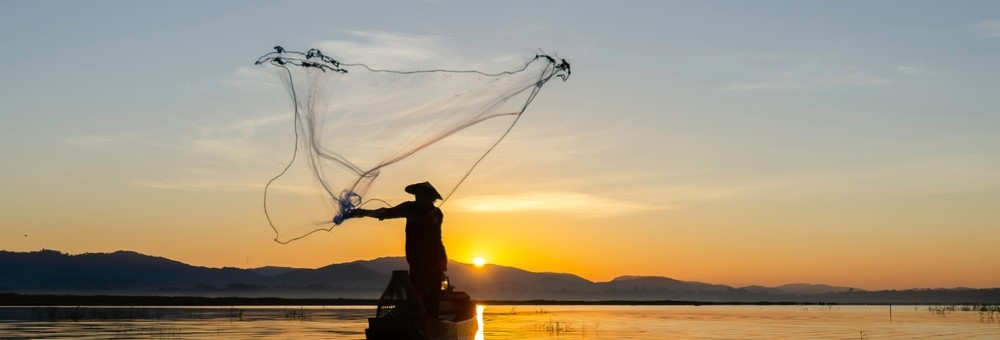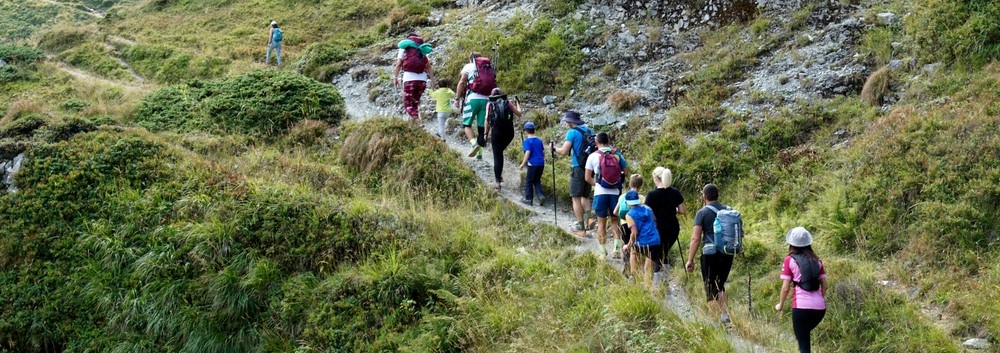
1. Champion Environmental Education

Become a vocal advocate for EE, and make environmental education's contributions to society more explicit to encourage higher levels of public support. Promote key messages about the value of environmental education to learners, leaders, and other sectors of society.
Here's a sample of the feedback from the global community:
- "Develop talking points and messages that all EE organizations and leaders can use in promoting their work so that we have a common message. The value of EE has never been clearly and concisely articulated for communicating with others."
- "Provide key messages and promotional templates that national, state/provincial and local organizations could use."
- "Identify influencers from outside 'traditional EE' and work to equip them to inspire others to get involved."
- "Make the case for how EE can more fully engage students, create authentic learning opportunities, help standards become more relevant, connect with community, and build a sense of agency."
- "Promote the research that shows that EE 'works'. And use the research creatively to tell our story."
- "Identify and build relationships with decision makers and influencers in government, business, foundations, and universities. Reach out to leaders in complementary fields and look for opportunities to partner."
- "Develop a set of clear, easily digestible messages and talking points that highlight the value of environmental education."
- "Publish op-eds, stories, and other pieces that show how education is creating change at all levels—and highlight the many approaches that are yielding high-impact results. Use research that shows that EE is effective in changing attitudes and promoting action."
- "Integrate EE into all formal and nonformal educational systems around the world and promote its value to learners and society."
- "We need more case studies showing how EE contributed to positive community change from all parts of the world."
- "Take every opportunity to be a champion for the work we do. Don't be shy—we should be proud of what our field has accomplished."
2. Build a Bigger and More Inclusive Field

Ensure that people of all races, ethnicities, sexual preferences, genders, abilities, and socio-economic backgrounds have access to high-quality environmental education and are leading the movement to create a more sustainable future. Embrace new ideas, partnerships, and innovations from a diversity of sectors and fields to help achieve the sustainable development goals.
Here's a sample of the feedback from the global community:
- "Invest in new and diverse leaders, including leaders from developing nations, leaders of color, and youth leaders."
- "We must work to create internship and leadership opportunities to get more diverse leaders in the field. Once diversity is reflected in the EE community, it will exponentially increase the diversity of people we are able to educate and inspire..."
- "Challenge the traditional demographic of environmental educators to expand our definition of the 'environment'-we will find more common ground, and overlap with more people and communities."
- "Partner or establish colleagues with community groups or organizations that reflect various forms of diversity, such as church groups or civil rights organizations."
- "There can be very little collaboration and exchange worldwide if there are no means of sharing information in various languages."
- "Every person in this field needs to commit to learning about equity, access, and inclusion, and how to work more effectively to support marginalized and underrepresented populations."
- "Look for partnerships in other sectors that help us to broaden our understanding of environmental education in a broader context, and look for opportunities to collaborate around shared goals."
- "Obtain and post case studies of diverse groups engaged in meaningful environmental action. Emphasize inclusiveness and how diverse perspectives are represented."
- "Promote effective professional development opportunities focused on environmental justice and equity for everyone working in education—including environmental educators!"
- "Ensure that teaching materials, training, and resources are in languages accessible to all."
- "Highlight the work that so many are doing to address inequality in education and how justice and environmental protection are connected."
- "We need more partnerships with business and universities who are also working on equity and inclusion."
- "We won't make progress unless we address institutional racism and link it to a more sustainable future. We need to focus on the environmental, on social justice, and economic opportunities for everyone."
- "We often leave out those who are mentally and physically challenged when we talk about reaching all audiences. We need to make sure everyone's at the table."
3. Create and Empower Global Citizens

Promote environmental education's role in fostering civic engagement, deliberation, critical thinking skills, and active participation, and in motivating individuals, organizations, and communities to take an active role in creating positive change.
Here's a sample of the feedback from the global community:
- "Develop an education system and platform that would equip students with the competencies they need to thrive and contribute to sustainable development in an era of globalization."
- "Change the way educators implement EE from more or less awareness raising and knowledge to action oriented work. Where teachers / educators are truly empowering the participants to get active and develop projects to create a better place in their communities and beyond, thereby, learning and developing life skills that can be applied throughout life."
- "Create a global community that focuses on solutions from large scale to small scale changes that make an impact."
- "Create exchange programs for environmental educators, produce adaptable and multilingual EE resources, and share ideas for solutions, both large scale and community based, that have had impact."
- "Inspire students—through example and through experiential learning—to become active, informed citizens who understand their power to help create a sustainable world."
- "Work more closely with those working to promote engaged communities—including the civic education field."
- "Help educators see that it's important for all learners to understand the importance of creating healthier communities and getting involved in civic [life] as part of our "dues" for living in society. We all need to have the skills to get involved and contribute to a better future."
- "We need a world-wide exchange program to help support learning, leadership, and integration."
- "We need to link environmental education, civics, and literacy."
- "I would like to see the GEEP develop a list of active citizenship competencies that could be used as a guide in countries around the world."
- "Integrate what we know from those studying networks for social change and help learners understand how to get involved and how to participate in civic systems."
4. Grow Global EE Leadership

Develop a leadership pipeline to create a cadre of global leaders who have the 21st Century skills to address current and future sustainability issues. Promote ongoing professional development to sustain leadership.
Here's a sample of the feedback from the global community:
- "Design and fund a competitive, international fellowship/leadership development training initiative, or international exchange fellowship."
- "Connect individuals to leadership roles. This may be in government or running for office."
- "Provide rigorous and inclusive development opportunities for mid-career and senior level leadership in EE via cohorts."
- "Developing more initiatives which bring together researchers and practitioners at multiple levels of the system. One good model of this is the Transnational Dialogues in ECEfS (Early Childhood Education for Sustainability) which brings late, mid and early career researchers together with practitioners to grow the field of ECEfS. Through this leadership model, myriad international collaborations, research partnerships and sustainability actions are being propagated."
- "Encourage and assemble a network comprising the next generation of EE leaders at the local and regional level in government and nonprofit sectors throughout many countries."
- "Secure funding for leadership development opportunities, including fellowships, conferences, and training programs, that result in skills building for emerging EE leaders."
- "Let young people lead. Empower young professionals to take on leadership positions within your organization and beyond, by joining boards and committees, and by actively listening and learning from them."
- "Build multi-generational relationships. Provide opportunities for emerging EE professionals to interact with a broad network of EE leaders locally and regionally, from varying sectors, in varying roles, and from diverse countries."
- "Nurture strengths. Identify and cultivate individual strengths of emerging professionals, and help them identify possible career paths where they can best contribute to sustainability."
- "How can we create more internships and leadership opportunities for those who don't have the funding to volunteer?"
- "Start an EE Without Borders where Environmental Educators can volunteer/get a stipend, similar to Peace Corps, to spread EE, teach classes around the world and learn and share from others."
5. Invest in Research to Improve Practice

Continue to invest in research and evaluation in the field, to drive innovation and new thinking about what can help create a more environmentally literate and civically engaged global society. Deliver clearer actions, outcomes, and impact.
Here's a sample of the feedback from the global community:
- "There is a need for the enforcement of an interdisciplinary dialogue and synergies for the enrichment of the field. Environmental philosophy, psychology, anthropology etc. have a lot to offer to EE."
- "Develop and promote a research agenda that could fill current gaps of knowledge about the benefits of environmental education to an individual's physical, emotional, social, and academic health; then how that relates to global change for a [healthy] planet."
- "Build capacity of educators to monitor educational effectiveness."
- "Ensure that EE programs are backed by the EE research findings."
- "Build mutually-beneficial collaborations. Foster active collaborations between educators, researchers and other professionals from varied backgrounds within and outside of EE to ensure ongoing learning exchanges."
- "Highlight multidimensionality. Focus on research that examines how EE can function adaptively and productively in varying political, cultural, and curricular contexts around the world."
- "Invest in evaluation. Ensure that all EE programs include a comprehensive, adaptive evaluation strategy, and ensure all staff are trained on effective EE evaluation techniques."
- "Develop shared metrics. Develop a set of shared, global metrics that can be used broadly, and adapted to fit various cultural and geographic contexts."
- "We need more training in research and evaluation for those working in this field. And we can't forget the importance of evaluation."
6. Connect and Collaborate for Change

Collaborate with other organizations and agencies to create a multiplier effect that can impact the larger environment, sustainability, and education communities. Use the power of technology to leverage meaningful opportunities to learn, network, and share.
Here's a sample of the feedback from the global community:
- "Connect and collaborate with all public and non-government organisations currently engaged in sustainable development and environmental education projects."
- "Use an online platform where educators and students can meet and collaborate on issues that are common or just to learn more about the others' issues."
- "Connect classrooms from different areas of the globe via distance learning technology to share local concerns and actions with their partner school."
- "GEEP could push collaboration forward to a new level by encouraging and evaluating EE practitioners on their ability to mobilize around collective impact, finding common metrics and concrete, actionable goals and timelines that can be followed."
- "Foster interdisciplinary and international collaboration by actively engaging EE stakeholders-- including educators, schools, citizens, organizations, businesses, academics, and governments—in decision-making."
- "Develop virtual and in-person learning opportunities (between students, EE professionals, etc.) to support distance learning and collaboration, and prioritize outreach to educators in developing countries and those without organizing bodies, like associations."
- "Prioritize the sharing of resources in multiple languages by partnering with bilingual organizations and individuals who understand EE content, and who can help translate."
- "Develop a set of common measures for success, co-created by educators around the world, for use in demonstrating the multi-dimensional impact of EE, and its relationship to achieving the Sustainable Development Goals."
- "Establish a global fund for the exchange of ideas and practices for environmental education (we should think, share, educators, and act together)."
- "The GEEP could push collaboration forward to a new level by encouraging and evaluating EE practitioners on their ability to mobilize around collective impact, finding common metrics and concrete, actionable goals and timelines that can be followed."
- "We can't keep doing our own thing and just evaluate our own programs and not sure the learning. How can we roll up our data and look to trends and effective practice on a larger scale?"
- "Develop a broader, more inclusive, model for networking."
7. Expand Environmental Education's Role in Achieving Conservation Success

Enhance collaboration between environmental education professionals and conservation leaders to more effectively achieve conservation goals—from protecting species and wild spaces to engaging people in conservation planning.
Here's a sample of the feedback from the global community:
- "Teach our children in our environment and school to be agents of environmental awareness and action."
- "Involve learners of all ages in community conservation projects."
- "Support educators in developing project-based learning curriculum to get youth working on solving real conservation problems now."
- "Reach out to land trusts around the world to help them establish EE programs as part of their mission."
- "EE is often viewed as for children solely. Adults also require EE experiences. I recommend tying children's EE experiences directly to conservation practices that influence the adults, and engaging adults directly through programming aimed at those that aren't traditionally conservation minded."
- "Support/participate in collaborations with researchers and conservation NGOs to help illuminate and strengthen the connection between environmental education and conservation."
- "Participate in mutually-beneficial collaborations with researchers and conservation NGOs to strengthen the connection between EE and conservation success."
- "Promote experiential learning for students and adults through place-based, real-world opportunities to conserve local resources while enhancing environmental literacy."
- "Create programs that empower young people to become ambassadors for change in their communities, particularly with adults, to further program impact and engage new audiences."
- "Link environmental educators with conservation professionals to work collaboratively toward sustainable solutions. We need to work together, not in separate silos."
- "Use the many tools that are out there to plan conservation programs with people in mind, using education as one important strategy to achieve change."
- "Demonstrate how education can help address the sustainable development goals focused on biodiversity and other conservation issues."
- "Demonstrate the role that education plays, in conjunction with social marketing and communication, to help engage people."
8. Provide Universal Access to Environmental Education and Nature

Through innovative policies and practices—such as citizen science, project-based learning, and service learning—demonstrate how connecting people of all ages to nature, coupled with effective educational approaches, can help build a lifelong stewardship ethic.
Here's a sample of the feedback from the global community:
- "This action should be more inclusive than age. Universal access should include equitable access to nature and EE regardless of geographic location (e.g. rural vs. urban), cognitive and physical ability, socioeconomic status, car ownership / access to public transportation, and all the other markers (e.g. race, sex, sexual orientation)."
- "We must focus more on including environmental education in teacher training in primary, secondary and tertiary education to instigate change in the education system."
- "Work with legislators to help them recognize the benefits of citizen science and EE."
- "We should make environmental literacy a requirement for graduating from secondary school."
- "Increase access. Advocate for making EE resources widely and freely available; funding EE in under-resourced schools, communities, and nations; engaging in research that addresses EE access; and supporting approaches to EE that can be used or adapted in diverse settings."
- "Mandate EE in formal schooling. Continue to demonstrate the multidisciplinary nature of EE and its connections to student academic success to policymakers and influencers to advocate for support for EE inclusion as a tool for student success."
- "Provide age-appropriate ways for young children to experience nature and connect to their local environment."
- "Identify and share successful cases where EE has been mandated at the state/province and/or country level, and has resulted in a more environmentally literate citizenry."
- "Create buy-in. Build relationships with policymakers, corporations, influential individuals, and funders to develop multi-sector support for EE, and cultivate potential funding opportunities."
- "Countries should start lifting the visibility and importance of EE, perhaps make it mandatory in schools. If climate change is the biggest problem we are facing in the 21st century, everyone should learn about it!"
- "We need to demonstrate the impact of EE and how EE addresses the sustainable development goals to achieve universal access."
- "Expand policies that mandate environmental education and experiences in nature throughout formal and nonformal education. Promote each other's programs; link environmental education with outdoor exploration so that young people development the knowledges, skills, and motivation to help protect the environment and create a more sustainable future."
- "Figure out how to link technology to environmental education and nature exploration. Technology is not going away, so what are strategies to combine efforts?"
9. Strengthen Environmental Education's Role in Achieving the U.N. Sustainable Development Goals (SDGs)

Actively develop partnerships and collaborations that address how environmental education can help achieve the SDGs and targets, leading to a more just and equitable society.
Here's a sample of the feedback from the global community:
- "Be deliberate about addressing poverty through EE programs."
- "Have a NAAEE/GEEP conference themed around the SDGs and invite keynotes and workshop leaders from UNESCO and UN to help create a catalyst event."
- "Align our work to the SDGs. Link EE to social initiatives, promote project-based learning in support of the SDGs, develop curricular resources linked to the SDGs, and create opportunities to share ways in which we can help address SDGs."
- "Prioritize global collaborations. Gather EE leaders, researchers, funders, and policymakers around the globe to discuss how to best strengthen EE's role in supporting the SDGs."
- "Link the development of a global fund for EE to the Sustainable Development Goals and support projects that are focused on the intersection of EE, protection of biodiversity, poverty and hunger, climate change, and other goals."
- "Work with decision makers to integrate the SDGs into all ministries of education and program of studies at all levels."
- "Provide ideas about how environmental educators can develop programs that link to specific SDGs. (Maybe prioritize the ones that make the most sense to get started.)"
- "In the United States, align the NGSS with SDG and curate learning materials that support both."
- "We need to help young people—starting in primary grades—about the importance of sustainability and that that means to them."
- "Let's figure out a way to link environmental education and poverty reduction through a global fund to support scholarships and leadership programs for those most vulnerable."
10. Develop a Global Fund for Environmental Education

Identify and cultivate long-term funding sources to advance and sustain environmental education at the local, regional, national, and global levels and continue to support innovative partnerships to expand the reach and impact of the field.
Here's a sample of the feedback from the global community:
- "Approach the venture capitalist sector, propose seed funding for innovative experiential environmental education programs."
- "[Create] a comprehensive list of some of the current large funders of EE and [host] a conference/workshop, etc. to try and get them on board with a global fund."
- "Look to already existing international partnerships for opportunities. Think big. UN, World Health Organization."
- "Source funding from several foundation partners and look into legal requirements for a truly GLOBAL (NOT just AMERICAN) fund for individuals, non-profits, and companies looking to do good EE work in their local community."
- "Funding drives implementation and a potential next step might be to utilize tools to see the social/business networks of those currently engaged in the field to leverage key relationships and build an 'influencers network' to advance the idea."
- "Linking environmental education to practical skills training programs that create green jobs and promote innovations in high-risk and marginalized communities."
- "Cultivate partnerships with organizations whose goals overlap with and complement EE, and approach funders with collaborative, large-scale proposals."
- "Conduct a gap analysis and determine priorities (societal and within our field) that need funding, from green jobs to organizational capacity building, to funding priorities for marginalized communities."
- "Cultivate and convene a diverse, and global, group of funders to collaborate and invest in high-potential EE strategies around the globe."
- "Get sponsorships/grants/funds from both large & small businesses/corporations that champion environmental responsibility."
- "We need more global funding for underserved audiences to fully participate in environmental education opportunities."